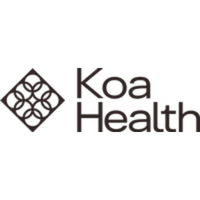Four ways to obtain (and make the most of) data insights
When it comes to taking care of employee wellbeing (and nearly everything else), organisations rely heavily on quantitative data, ie what can be measured in numbers.
This sort of data is easy to anonymise and traditionally thought of as objective and reliable. It’s also relatively easy and (unintrusive) to capture. Websites and apps, for example, typically request permission to collect and anonymise data about user behaviour and quietly compile this user information over time (unless a user removes authorisation and requests their data be deleted).
Qualitative data, on the other hand, is based on language and is by nature more descriptive and emotional. Perhaps in part because of this, it’s sometimes neglected by organisations who may feel it’s too subjective, not to mention challenging to obtain. Employers may also worry about whether or not employees will feel comfortable sharing this sort of information, as it’s more difficult to anonymise than purely numerical data.
But this kind of data can help companies increase the depth and breadth of their understanding of their workforce. Qualitative data offers an expanded view. It’s an exploration that goes beyond how many, when, and where and delves into how exactly, and why.
Each type of data has its strengths and weaknesses, but to get a complete picture of complex issues like employee mental health and wellbeing, companies must collect and analyse both types of data. But what’s the best approach?
Four fundamental principles to obtaining (and leveraging) data insights
Every workplace is different, but there are a few fairly universal concepts companies should keep in mind when gathering, analysing and actioning data.
1. Make the workplace a safe space
If you want employees to feel comfortable sharing personal insights, you must build a culture where employees feel they can speak freely. Specifically, to get the more expansive opinions and accounts of personal experiences we call qualitative data, comfort and trust are 100% required. Without them, there is no honesty or willingness to share. This is especially true as it relates to mental health.
2. Have a clear purpose in mind
Data-collection of any type must be hypothesis, or purpose driven. What’s the end goal? What questions are we asking and why? To build trust (and inspire long-term change), organisations must be careful that they’re not compiling large quantities of information ‘just in case’. Having a well-defined end goal can also help organisations decide which type of data is needed (qualitative, quantitative or both) and communicate why to their teams.
3. Make gathering (and analysing) data easy
With apps, analytics and anonymous surveys and forms, compiling data while protecting employee privacy is easier than ever before. But to make the most of it, it’s best practice to have processes in place to keep all of your data organised and accessible. You’ll also need to define best practice for combining types of data obtained across different platforms so that when it comes time for in-depth analysis and data-based decisions, nothing is distorted or taken out of context.
4. Use data to drive action
To make the most of the data you collect, you’ll need to commit to analysing, presenting to your wider team and proposing action on a regular basis. Careful analysis is only the start. Presenting your data to the wider team is a critical step that gives employees a chance to weigh in and offer up fresh perspectives before a final decision is made. But after that, data must be used to drive action. While a survey by Accenture of more than 10,000 workers shows 92% of employees are okay with companies collecting their information, this only holds true if data collected is used to their benefit.
Koa Health’s free report, Mental Health and The Employee Experience, contains more about what research (and industry data) says about how mental health impacts the employee experience.
Supplied by REBA Associate Member, Koa Health
At Koa Health, we believe digital mental health solutions are the answer to mental health issues.








